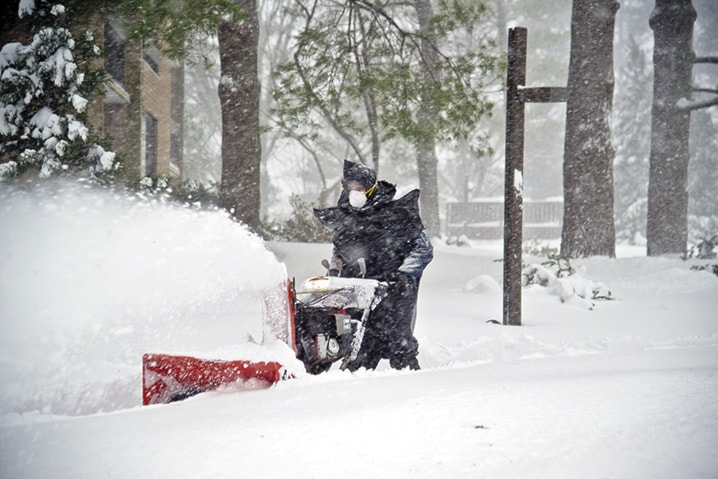Many of us, myself included, dread that Sunday every fall when we must turn the clocks back and sunset comes early. (I’d rather curse the darkness than light a single candle.) I miss being outdoors in the evening, walking or playing with my dogs, and I hate driving in the dark, when I don’t see as well.
But these reactions are mild compared with what some people experience. For the more than 14 million Americans (an estimate extrapolated from research surveys) with seasonal affective disorder, or SAD, the onset of shorter, darker days can trigger a far more serious reaction.
This is real depression, with symptoms that can be crippling: While some researchers dispute that winter per se is the cause, many studies have found specific seasonal symptoms as the light wanes: profound melancholy, loss of interest in otherwise enjoyable activities, social isolation, significant sleep and/or appetite changes, difficulty concentrating and, in extreme cases, thoughts of suicide.
For years, the gold standard of treatment for SAD has been regular exposure to artificial light, an effective approach as long as people consistently use it. Patients also sometimes take antidepressants to ease their symptoms; Wellbutrin XL is the only drug specifically approved to treat SAD, although some clinicians also prescribe selective serotonin-reuptake inhibitors, such as Zoloft and Prozac.
But a recent study found that traditional talk therapy actually may work better over time, especially in preventing relapses.
“Light therapy is a palliative treatment, like blood pressure medication, that requires you to keep using the treatment to be effective,’’ says Kelly Rohan, a professor of psychology at the University of Vermont and author of the study, published last fall in the American Journal of Psychiatry.
By contrast, cognitive behavior therapy, or CBT, is a preventive approach that teaches people to recognize and challenge their negative thoughts, and replace them with positive feelings and actions. “It’s great progress to get someone with SAD to think, ‘I prefer summer to winter’ than ‘I hate winter,’ and encourage them to engage in proactive behavior,’’ such as getting out of bed on a dark morning to exercise rather than going back to sleep, Rohan says.
“What is unique about this form of depression is that it follows a seasonal pattern,’’ Rohan says. “A winter-type SAD person feels the very best in the summer. There is a very slim minority of patients who are depressed in the summer and feel best in the winter, mostly because of a sensitivity to heat and humidity, but most experience SAD in the winter. We see dramatic changes in behavior. These people don’t interact with others, sometimes they don’t even answer the phone. They go into hibernation mode.’’
In her study, funded by a $2 million grant from the National Institute of Mental Health, 177 people with SAD were treated with six weeks of either light therapy - timed, daily exposure to bright artificial light of specific wavelengths using a light box - or a special form of CBT, with 90-minute group therapy sessions twice a week. The latter group learned to challenge negative thoughts about dark winter months and to resist certain behaviors such as avoiding social contact.
“We developed a CBT protocol specific to seasonal depression,’’ Rohan explains. “The cognitive part involves having people write down their thoughts and examine them in less negative ways. When you engage in that process - recognizing and challenging these negative thoughts - your mood improves.’’
The behavioral piece of the treatment encouraged participants to resist “spending a lot of time indoors under a blanket and cutting themselves off from social contact’’ by such activities as getting out of the house to exercise, for example, and interacting more with their friends and family.
“We have them try to take baby steps to get out of that negative mode,’’ Rohan says. “We encourage them to think about things they might be able to do in the winter, even though it does take more effort. Short of lying on a beach, there are things you can do. For example, maybe you like to garden, so perhaps you could start cultivating bulbs indoors.’’
The cognitive and behavioral aspects “work in tandem by changing thoughts and actions, and they put a dent in the depression,’’ she adds.
Two winters after the initial treatment, 46 percent in the light-therapy group reported a recurrence of depression, compared with 27 percent in the CBT group. Symptoms also were more severe in the light-therapy group, according to the study.
“Only about one-third of our light-therapy participants reported any light therapy at the first or second winter follow-up,’’ Rohan says. “This is lower than hoped for a treatment that is meant to be continued each fall/winter season.’’
The study did not ask why patients failed to comply with the regimen, but Rohan believes they probably find it inconvenient and burdensome.
“Think about spending at least 30 minutes in front of a device each day for the duration of SAD season,’’ she says. The season lasts five months, which means 75 hours of light therapy. “If they have a job or other responsibilities, they typically have to rise early to get their light therapy in before they need to go to work, or get the kids ready for school, and most SAD patients have low energy and oversleeping as symptoms that make this difficult,’’ she says.
